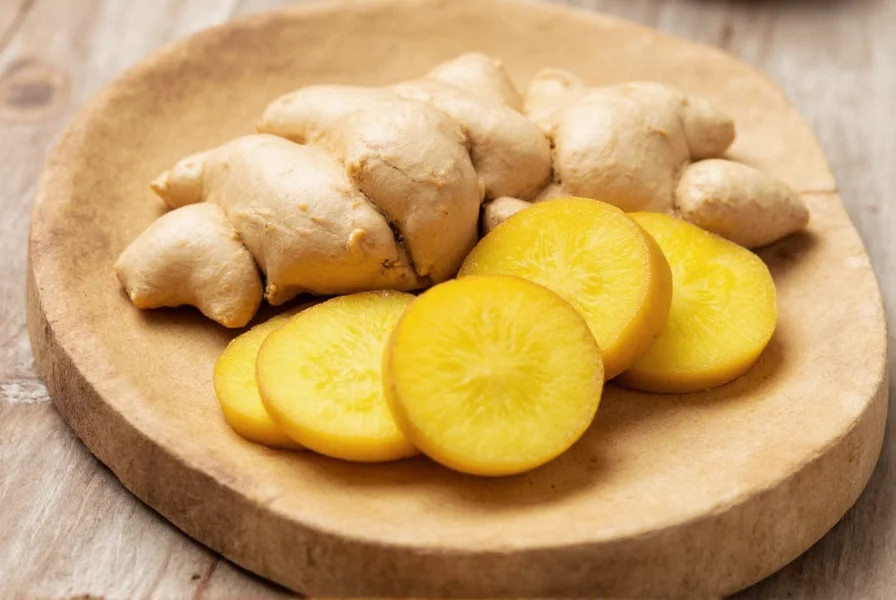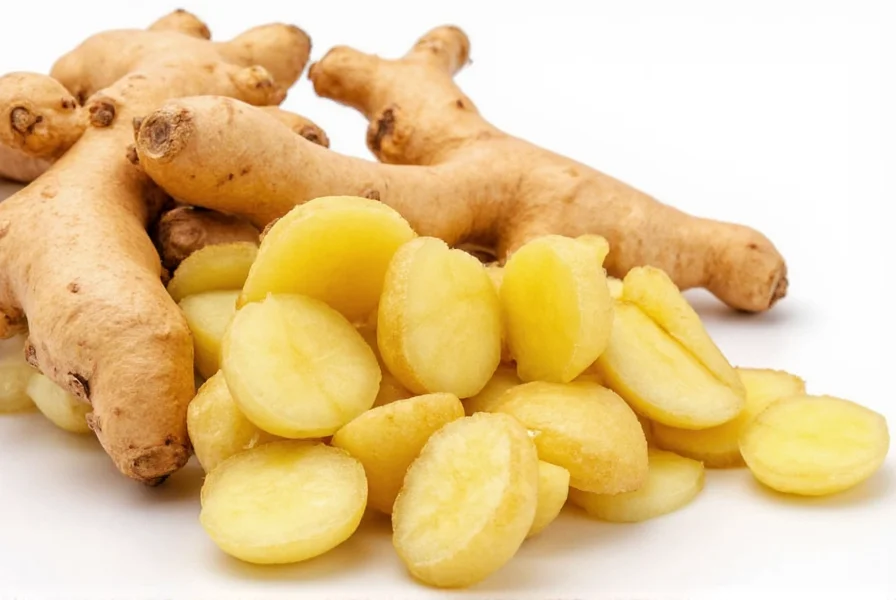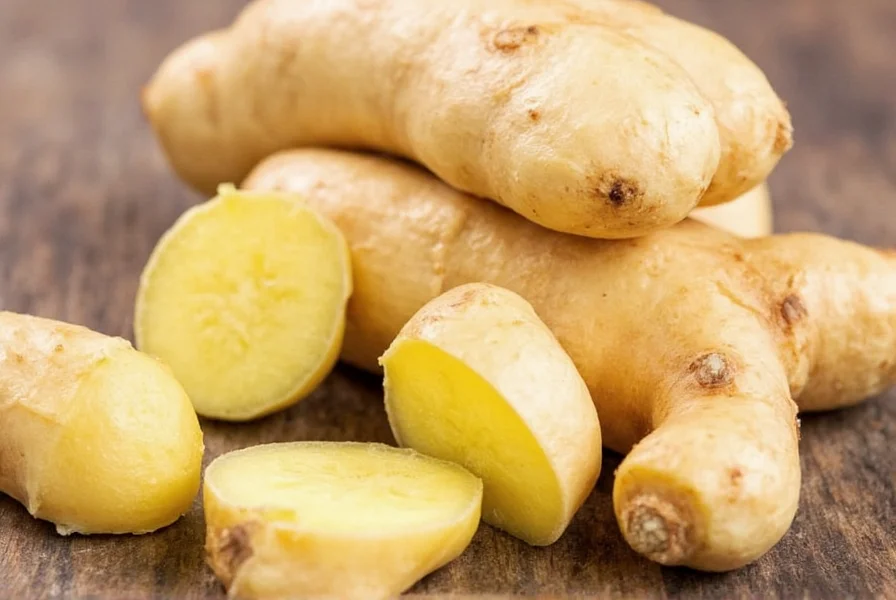Sweet ginger represents one of the most versatile preparations of Zingiber officinale, the common ginger plant. While many confuse it with a specific ginger variety, sweet ginger actually describes either immature ginger rhizomes or ginger preserved through sugaring techniques. This distinction matters significantly for culinary applications and flavor profiles.
Understanding Sweet Ginger Varieties
Two primary interpretations exist for sweet ginger in culinary contexts:
- Young Ginger - Harvested at 3-5 months (vs. 8-10 for mature ginger), featuring thin skin, high moisture content, and naturally milder flavor
- Candied/Crystallized Ginger - Mature ginger simmered in sugar syrup, then coated with sugar crystals
The confusion between these types creates frequent substitution errors in recipes. Young ginger works best in raw applications like salads and sushi, while candied ginger shines in baking and confections. Understanding sweet ginger vs regular ginger differences prevents disappointing culinary results.
Flavor Chemistry and Characteristics
Ginger's pungency comes primarily from gingerols. As ginger matures, these compounds convert to shogaols, increasing heat intensity. Sweet ginger preparation methods either:
- Preserve lower gingerol concentrations (young ginger)
- Dilute pungency through sugar saturation (candied ginger)
| Ginger Type | Gingerol Content | Shelf Life | Ideal Applications |
|---|---|---|---|
| Young Sweet Ginger | 1.2-1.8% | 2-3 weeks refrigerated | Salads, sushi, pickling |
| Mature Ginger | 3.5-4.2% | 3-4 weeks refrigerated | Cooking, stir-fries, strong flavors |
| Candied Sweet Ginger | 0.4-0.7% | 6-12 months sealed | Baking, tea, confections |
This chemical transformation explains why how to make sweet ginger at home requires precise timing. Extending the sugar cooking process beyond 45 minutes significantly reduces beneficial compounds while increasing caramelization.
Culinary Applications and Pairings
Sweet ginger's delicate profile makes it exceptionally versatile. Professional chefs recommend these pairings:
- Fruit combinations - Pairs beautifully with stone fruits, citrus, and tropical varieties
- Seafood enhancement - Complements delicate fish without overpowering
- Baking applications - Provides warmth without the burn of mature ginger
When developing recipes using sweet ginger, remember that uses for sweet ginger in cooking differ significantly from regular ginger. Its lower pungency means you can use 30-50% more by volume without overwhelming other flavors. This makes it ideal for dishes where ginger should complement rather than dominate.

Preparing Sweet Ginger at Home
Creating authentic sweet ginger requires attention to detail. Follow this professional method for candied ginger:
- Select firm, smooth ginger rhizomes with tight skin
- Peel and slice into 1/8-inch pieces
- Simmer in water for 20 minutes to reduce bitterness
- Prepare sugar syrup (2:1 sugar to water ratio)
- Add ginger to syrup and simmer 30-45 minutes until translucent
- Remove ginger, reserve syrup for tea
- Toss in granulated sugar and air-dry 24 hours
The resulting candied ginger recipe yields ginger with balanced sweetness and subtle warmth. For sweet ginger tea benefits, use the reserved syrup diluted in hot water with lemon.
Storage and Shelf Life Considerations
Proper storage significantly impacts sweet ginger's usability:
- Young ginger - Store in paper bag in vegetable crisper (2-3 weeks)
- Candied ginger - Keep in airtight container with rice to absorb moisture (6-12 months)
- Freezing option - Blanch young ginger slices before freezing for up to 6 months
Many home cooks wonder where to buy sweet ginger when fresh options are unavailable. Asian markets typically carry young ginger April-August, while specialty grocers stock candied versions year-round. For consistent quality, learning to prepare it yourself proves most reliable.
Health Considerations
While health benefits of sweet ginger differ from mature ginger due to processing, both forms retain valuable properties. The cooking process reduces but doesn't eliminate gingerols. Research published in the Journal of Agricultural and Food Chemistry confirms that properly prepared candied ginger maintains approximately 60% of fresh ginger's active compounds.
Nutritionally, one tablespoon of candied sweet ginger contains:
- 25 calories
- 6g carbohydrates
- 0.1g protein
- Trace amounts of potassium and magnesium
Those monitoring sugar intake should note that the preservation process adds significant sucrose. For therapeutic benefits without added sugar, consider using young ginger in raw applications or making ginger tea from fresh slices.

Conclusion
Sweet ginger represents a culinary treasure that bridges the gap between intense spice and delicate flavor. Whether using young rhizomes for their natural sweetness or preparing candied versions for baking applications, understanding its properties elevates your cooking. The key to maximizing sweet ginger benefits lies in matching the appropriate type to your specific culinary application while respecting its unique flavor chemistry.
Frequently Asked Questions
What's the difference between sweet ginger and regular ginger?
Sweet ginger refers either to young ginger harvested early (3-5 months) with naturally milder flavor, or to candied ginger preserved in sugar syrup. Regular mature ginger develops stronger heat over 8-10 months as gingerols convert to more pungent compounds. Young sweet ginger has thin skin and high moisture, while candied ginger features sugar-coated pieces with balanced sweetness and warmth.
Can I substitute sweet ginger for regular ginger in recipes?
Substitution requires adjustment. Sweet ginger provides about half the heat of mature ginger, so you'll need approximately twice the amount to achieve similar pungency. For raw applications like salads, young sweet ginger works as direct substitute. In cooked dishes, remember that candied ginger adds significant sugar, which may alter recipe chemistry. When making ginger tea, use 30% more sweet ginger to compensate for reduced potency.
How long does homemade sweet ginger last?
Properly prepared candied sweet ginger stored in an airtight container with moisture-absorbing rice lasts 6-12 months at room temperature. Young fresh sweet ginger keeps 2-3 weeks refrigerated in a paper bag in the vegetable crisper. For extended storage, blanch young ginger slices and freeze for up to 6 months, though texture changes slightly upon thawing.
Does sweet ginger have the same health benefits as regular ginger?
Sweet ginger retains approximately 60% of fresh ginger's active compounds after proper preparation. The cooking process reduces but doesn't eliminate beneficial gingerols. While candied versions contain added sugar, they still offer digestive benefits. For maximum therapeutic value without added sugar, use young sweet ginger raw or make tea from fresh slices rather than relying solely on candied products.
Where can I find young sweet ginger?
Young sweet ginger appears seasonally (April-August) at Asian markets, farmers' markets, and specialty grocers. Look for rhizomes with thin, smooth skin that doesn't require peeling. When unavailable fresh, some online retailers ship young ginger during peak season. For year-round availability, your most reliable option is preparing candied sweet ginger at home using mature ginger, which remains available throughout the year.











 浙公网安备
33010002000092号
浙公网安备
33010002000092号 浙B2-20120091-4
浙B2-20120091-4